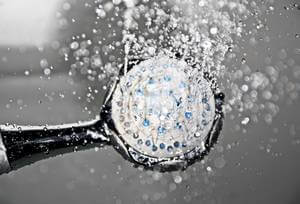
If you live in the southeast of England, or indeed most places in the UK except for the Scottish Highlands, the chances are you that you will have noticed a build-up of limescale on your appliances and bathroom and kitchen fittings. But how is it caused and what can you do about it? Let us help…
Hard water
You have no doubt heard of hard water before. But in case you haven’t, or don’t know exactly what it means, hard water is that which has a higher than usual natural mineral content. It typically occurs where there is underlying chalk and limestone rock in the ground which water filters through before it is extracted by water companies and piped to our homes. It is perfectly safe to drink, there is nothing to worry about with a higher mineral content in your water.
What happens in a hard water area?
The build-up of limescale that you see on your appliances, fixtures and fittings, and on your pipes is the result of those minerals being left behind when water evaporates. It is a chalky, white-coloured deposit, which feels flaky when scraped off surfaces.
How to deal with limescale build-up
There are a number of appliances that either come with an in-built filter or which you can use to filter water before using it. By filtering you remove those minerals that cause the build-up. Many kettles, coffee machines, and even built-in water dispensers in fridges have them, so you can avoid that unsightly build-up and the cleaning that goes with it by investing in one. Alternatively, you could use a water filter – whether fitted directly to your tap or a stand-alone one and fill your kettle, coffee machine, or iron from that.
When it comes to cleaning appliances and fittings of unsightly limescale, you have a couple of options:
- White wine vinegar will dissolve it naturally as it is an acid which will react with the alkaline limescale. You can place some in your kettle with some water and bring to the boil, rinsing out a couple of times once all the limescale has been removed. You can also use it on a wet cloth to wipe off limescale from any surface.
- Cleaning solutions that you can find in any supermarket and which are safe for fixtures and fittings too. Use on a wet cloth to wipe off and rinse well. For tough cases use an old manual toothbrush soaked in solution to gently scrub it off.
For your washing machine and dishwasher you can run a water softener through – either with every wash or once in while if your water isn’t very hard to ensure that all pipes and parts are clear of build-up as well which could otherwise damage your appliance or shorten its life.
Turning down your water temperature will also help reduce build-up on your boiler, heating system, and pipes. A temperature of 60 degrees Celsius or lower should reduce the build-up.
Maintenance
Keeping on top of limescale removal is important for maintaining well-run appliances and extending their lifespan. If elements or pipes become clogged or blocked they will cease working or be far less efficient, costing you more to run in the long run. Not to mention, it is unsightly, isn’t it?
For advice on anything to do with your plumbing, pipes, and water-using appliances talk to us at Platinum Plumbers. Find us on email or on the phone on 020 8855 0361 and at any time you need us.

